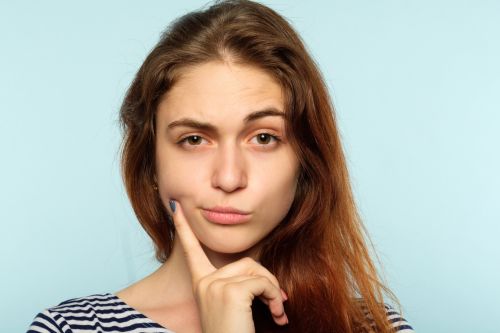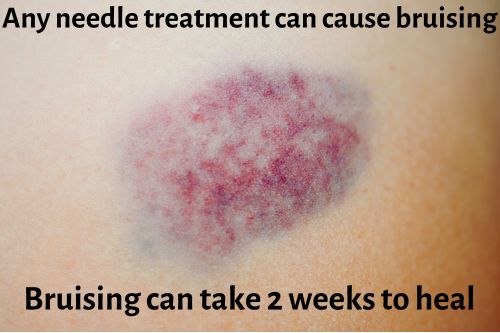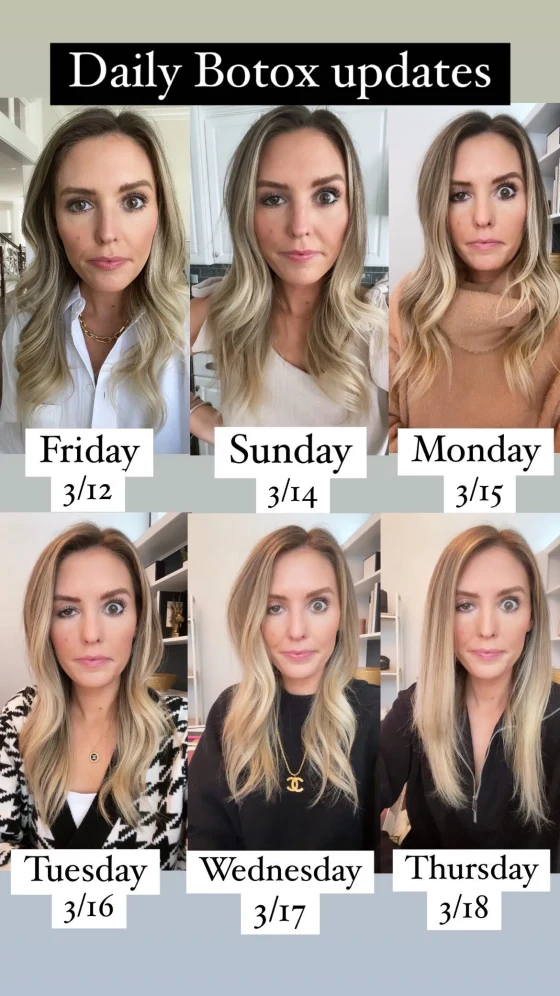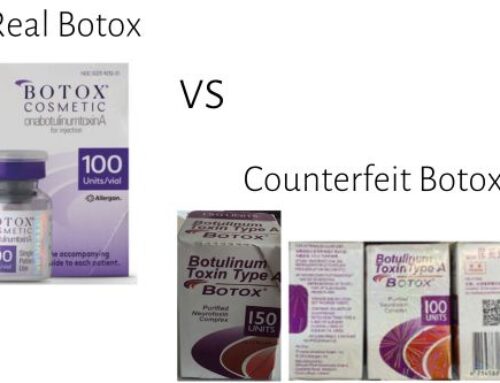Considering Botox injections to smooth out those pesky wrinkles? Before jumping into the world of cosmetic procedures, it’s crucial to be well-informed about the potential side effects. While Botox has gained immense popularity for its ability to turn back the clock on aging, it’s essential to understand the risks involved. In this article, we will explore the common side effects of Botox and provide you with the information you need to make an informed decision. From temporary bruising and swelling to more serious complications, we’ll address the range of potential outcomes, ensuring you make an informed decision. We’ll also explore factors that contribute to the likelihood of experiencing side effects and provide tips on how to minimize any potential risks. So, whether you’re a Botox newbie or someone looking to refresh your appearance, keep reading to discover the essential details you must know before undergoing Botox injections. Let’s ensure that your journey to a more youthful appearance is as smooth as possible! (pun intended)

How does Botox work?
Botox, short for Botulinum toxin, is derived from the bacteria Clostridium botulinum. Botox temporarily weakens specific muscles, reducing the strength of muscular contraction, and subsequently the appearance of wrinkles and fine lines. When injected into the targeted area, Botox blocks the nerve signals that cause muscle contractions, essentially creating a road block between the nerves and the muscles. When the muscles can’t contract, they cannot pinch and fold the skin, resulting in a smoother and more youthful appearance. It is commonly used to treat forehead lines, crow’s feet, and frown lines. To learn more about exactly how botox works, check out this article: What Exactly Does Botox Do?
Botox is a prescription medication and must be administered by a qualified healthcare professional. The procedure itself is relatively quick, with minimal discomfort. It is administered with a very small needle, and most people report feeling just a tiny pinprick at each injection point. It is important to note that Botox is not a permanent solution. The effects of Botox typically last 3-5 months, and repeat treatments are necessary to maintain the desired results. Now that we have a basic understanding of how Botox works, let’s delve into the potential side effects.
Common side effects of Botox injections
Like any medical procedure, Botox injections come with a set of common side effects that are generally mild and temporary. These side effects typically occur shortly after the procedure and subside within a few days or weeks. It’s essential to be aware of these potential effects to ensure a smooth recovery process.
One of the most common side effects of Botox injections is temporary bruising at the injection site. If the needle nicks a  blood vessel under the skin, it can lead to minor bleeding beneath the skin, which we see as a bruise. While bruising is usually mild and resolves on its own, it can be more noticeable if you are taking blood-thinning medications or have a bleeding disorder. Beware that significant bruising can take up to 2 weeks to resolve.
blood vessel under the skin, it can lead to minor bleeding beneath the skin, which we see as a bruise. While bruising is usually mild and resolves on its own, it can be more noticeable if you are taking blood-thinning medications or have a bleeding disorder. Beware that significant bruising can take up to 2 weeks to resolve.
In addition to bruising, temporary swelling and redness at the injection site are also common side effects of Botox injections. This swelling is a result of the body’s natural inflammatory response to the procedure. It usually subsides within a few minutes or hours depending on the individual. Applying an ice pack or cold compress to the area can help reduce swelling and alleviate any discomfort.
Another possible side effect is muscle weakness or drooping in areas adjacent to the injection site. This happens if the Botox spreads beyond the intended area, medically called “Unintended Spread of Toxin”. It most commonly occurs in the forehead, or the eyelids, but again, it’s a very rare occurrence. The effects are temporary and resolve as the Botox wears off. Unintended spread of toxin can be limited by closely following the after-care instructions provided to you. The image below is the internet famous progression of one woman’s journey with eyelid drooping after a routine botox treatment.
Serious, but rare, side effects of Botox injections
While rare, serious side effects can occur after Botox injections. It’s crucial to be aware of these potential risks and seek immediate medical attention if you experience any unusual or severe symptoms.
One rare but serious side effect is an allergic reaction to Botox. Symptoms of an allergic reaction may include itching, rash, hives, difficulty breathing, or swelling of the face, lips, tongue, or throat. If you experience any of these symptoms, seek emergency medical care immediately. It is important to inform your provider if you are allergic to eggs, lactose, or cow’s milk protein.
Another serious (but almost impossibly) rare side effect is the spread of the toxin beyond the injection site, causing bodily symptoms including difficulty swallowing or breathing, or loss of bladder control. If you notice any unusual symptoms in the days or weeks following your Botox injections, contact your healthcare provider immediately.
It’s important to note that the occurrence of these serious side effects is extremely rare. Botox has been extensively studied and approved by regulatory authorities, ensuring its safety when administered by qualified professionals. However, being aware of these potential risks allows you to make an informed decision and seek prompt medical attention if necessary.
Factors that can increase the risk of side effects
Several factors can contribute to the likelihood of experiencing side effects after Botox injections. It’s important to consider these factors and discuss them with your healthcare provider before undergoing the procedure.
One significant factor is the experience and expertise of the healthcare professional administering the injections. Successful Botox injections require a very detailed understanding of facial anatomy and muscles of expression. The purpose of Botox injections is to selectively weaken certain facial muscles, while leaving others untouched. Ultimately, Botox injections are all about manipulating which muscles are “on” and which are turned “off”. If a Botox provider doesn’t have an intimate understanding of facial muscles and anatomy, they can unintentionally turn “off” the wrong muscle, causing drooping or other unintended effects.
Individual factors such as age, overall health, and medical history can influence the risk of side effects. Older individuals may have a higher risk of bruising and muscle weakness due to the natural thinning of the skin and decreased muscle tone. Certain medical conditions and medications may increase the likelihood of complications, so it’s essential to disclose your complete medical history to your healthcare provider.
Lifestyle factors such as smoking and excessive alcohol consumption can impact the healing process and increase the risk of side effects. Smoking constricts blood vessels, impairing circulation and delaying the body’s natural healing response. Alcohol, on the other hand, can increase the risk of bruising and interfere with the body’s ability to metabolize the injected toxin. It’s advisable to avoid smoking and limit alcohol consumption for a few days before and after your Botox injections to minimize potential risks.
The “unintended spread of toxin” is another potential side effect that can lead to excessive muscle weakness, and drooping. This happens when the Botox medicine has affected muscles that are outside of the targeted treatment area. Since Botox is a liquid medicine, there is always a small potential for it to “drip” to other non-targeted areas. This can happen from touching or rubbing the treated area, or lying down after the treatment. This side effect can be minimized by closely following the after-care instructions provided to you.
Precautions to take before getting Botox injections
Before undergoing Botox injections, there are several precautions you can take to ensure a safe and successful procedure. These precautions help minimize the risk of complications and promote optimal results.
First and foremost, schedule a consultation with a qualified healthcare professional. During this consultation, discuss your expectations, medical history, allergies, and any concerns you may have. Your healthcare provider will evaluate your suitability for the procedure and address any questions or doubts you may have. While Botox is a very common treatment, it is still a prescription drug, and requires a medical evaluation before it can be administered.
It’s important to disclose all medications, supplements, and herbal remedies you are currently taking. Some medications, such as blood thinners, can increase the risk of bleeding and bruising. Your healthcare provider may advise you to temporarily discontinue certain medications before the procedure to minimize these risks.
It’s advisable to avoid consuming alcohol for at least 24 hours before your Botox injections. Alcohol can thin the blood and increase the risk of bleeding and bruising. Additionally, avoid taking aspirin or other non-steroidal anti-inflammatory drugs (NSAIDs) unless specifically instructed by your healthcare provider.
What to expect during Botox injections
Botox injections are relatively quick and straightforward. Before the procedure, you and your healthcare provider will discuss your goals and expectations of treatment. Then they will calculate the exact dose and pattern required to help you achieve this outcome. Before the injections, your provider will cleanse and prep the area with an alcohol sanitizing wipe, and finally, use a fine needle to inject small amounts of Botox into specific muscles. The injections themselves are very quick, and the number of injections will vary depending on the treatment area and your desired results. While the injections may cause mild discomfort, any pain is usually brief and tolerable.
The entire procedure typically takes around 30 minutes, and you can resume your regular activities immediately afterward. Your healthcare provider may provide aftercare instructions, such as avoiding strenuous exercise and excessive heat exposure for a few hours following the procedure.
Aftercare tips for minimizing Botox side effects
After your Botox injections, there are several aftercare tips you can follow to minimize side effects and promote a smooth recovery process. These tips help optimize the results and ensure a positive experience.
Firstly, avoid touching or rubbing the treated area for at least 24 hours after the injections. Rubbing can cause the Botox to spread to unintended areas, potentially leading to muscle weakness or drooping. It’s important to let the injected toxin settle into the targeted muscles for optimal results.
Additionally, avoid lying down or bending over for 4-5 hours after the procedure. This minimizes the risk of Botox spreading to adjacent muscles and reduces the likelihood of swelling or bruising.
Avoid strenuous exercise for 4-5 hours after the procedure. Exercise, or anything that increases metabolism and blood circulation can cause the medicine to be metabolized before it has had a chance to take effect, and increased circulation can move the medicine away from the targeted treatment area before it has done its job. Exercise, and increased blood circulation, can also increase the risk of swelling after the procedure.
Applying a cold compress or ice pack to the treated area can help reduce swelling and alleviate any discomfort. Wrap the ice pack in a thin cloth and apply it to the area for 10 to 15 minutes at a time, taking short breaks in between. Be sure not to apply ice directly to the skin, as it can cause ice burns.
If you are a person who bruises easily, Arnica pellets, and Arnicare Gel, can be helpful to use after your treatment to quell any potential bruising. Arnicare Gel can be gently applied over the treatment area several times a day until bruising has subsided, and is safe for most people.
When to seek medical attention
While most side effects of Botox injections are mild and temporary, there are instances where medical attention is necessary. It’s crucial to be aware of these situations and seek prompt care if you experience any concerning symptoms.
If you develop severe or persistent pain, swelling, or redness at the injection site, contact your healthcare provider. These symptoms may indicate an infection or other complications that require immediate attention.
Similarly, if you experience difficulty swallowing, speaking, or breathing, seek medical care immediately. These symptoms can be signs of the toxin spreading beyond the intended area and may require urgent intervention. However, while this is theoretically possible, the chance of this actually happening is extremely rare.
Conclusion
Botox injections can be an effective way to reduce the appearance of wrinkles and achieve a more youthful appearance. While the procedure is generally safe, it’s important to be aware of the potential side effects and take necessary precautions.
Common side effects include temporary bruising, swelling, and muscle weakness, which usually resolve on their own within a few days or weeks. Rare but serious side effects, such as allergic reactions and toxin spreading, are extremely uncommon but require immediate medical attention if they occur.
Factors that can increase the risk of side effects include the expertise of the healthcare professional, individual factors, and lifestyle choices. By choosing a qualified provider, disclosing your medical history, and adopting a healthy lifestyle, you can minimize potential risks.
Before getting Botox injections, schedule a consultation with a healthcare professional to discuss your expectations and address any concerns. Follow the recommended aftercare tips to promote optimal healing and results.
Remember, undergoing cosmetic procedures is a personal decision, and it’s essential to be well-informed and make choices that align with your goals and values. By understanding the potential side effects and taking necessary precautions, you can embark on your Botox journey with confidence, ensuring a smoother and more youthful appearance.
Interested in Botox injections in Portland?
Dr. Christina Baghdanov at Ageless Aesthetics is a naturopathic physician with a keen interest in Aesthetic medicine, and can administer cosmetic botox injections in the forehead, crow’s feet, frown lines, and lines around the mouth. If you would like to learn more about botox injections schedule a free consultation and we’ll discuss your goals and concerns, and explore all available treatment options.







